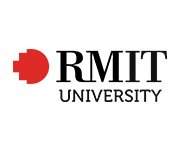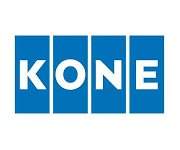Understanding Asset Life Cycle Management: A Comprehensive Guide
Asset life cycle management (ALCM) is a strategic approach to managing the entire lifespan of assets, from acquisition to disposal. It involves the systematic planning, tracking, and optimisation of assets throughout their lifecycle to maximise value, minimise costs, and ensure optimal performance. In this comprehensive guide, we'll explore the key components of asset life cycle management and its importance in effective asset management.
- Asset Acquisition: The asset life cycle begins with the acquisition phase, where assets are procured or purchased to meet organisational needs. During this phase, key considerations include identifying asset requirements, conducting cost-benefit analyses, selecting vendors, negotiating contracts, and procuring assets. ALCM ensures that assets are acquired efficiently, cost-effectively, and in alignment with organisational goals and objectives.
- Asset Deployment: Once assets are acquired, they are deployed or installed in their intended environment for use. During this phase, asset deployment activities may include installation, configuration, calibration, testing, and commissioning. ALCM focuses on ensuring that assets are deployed correctly and effectively, meeting performance standards and operational requirements.
- Asset Operation and Maintenance: The operational phase is where assets are utilised to fulfill their intended purpose. This phase involves ongoing operations, maintenance, and monitoring activities to ensure optimal asset performance and reliability. ALCM emphasises the importance of implementing preventive maintenance programs, conducting regular inspections, and monitoring asset performance to identify and address issues proactively.
- Asset Upgrades and Improvements: Over time, assets may require upgrades, enhancements, or improvements to maintain their relevance and effectiveness. ALCM involves assessing asset performance, identifying opportunities for improvement, and implementing upgrades or modifications as needed. This proactive approach helps to extend asset lifespan, enhance functionality, and adapt assets to changing business needs and technological advancements.
- Asset Decommissioning and Disposal: At the end of their useful life, assets are decommissioned and disposed of in a responsible manner. ALCM includes planning for asset retirement, assessing disposal options, managing asset disposal processes, and ensuring compliance with environmental regulations. Proper disposal of assets minimises environmental impact, mitigates risks, and maximises value recovery.
Effective asset life cycle management offers several benefits for organisations:
- Cost Optimisation: ALCM helps organisations optimise asset-related costs throughout the lifecycle, from acquisition to disposal. By implementing preventive maintenance, optimising asset utilisation, and making informed decisions about upgrades and replacements, organisations can minimise lifecycle costs and maximise return on investment.
- Risk Mitigation: ALCM enables organisations to identify and mitigate risks associated with asset ownership and operation. By conducting risk assessments, implementing preventive maintenance measures, and planning for asset retirement, organisations can minimise the risk of asset failures, downtime, and safety incidents.
- Compliance and Regulatory Compliance: ALCM ensures that organisations comply with relevant regulations, standards, and industry requirements throughout the asset lifecycle. By maintaining accurate records, documenting maintenance activities, and adhering to regulatory requirements, organisations can avoid penalties, fines, and legal liabilities.
In conclusion, asset life cycle management is a strategic approach to managing assets throughout their entire lifespan. By focusing on acquisition, deployment, operation, maintenance, upgrades, and disposal, ALCM enables organisations to maximise asset value, minimise costs, mitigate risks, and ensure compliance. Implementing effective ALCM practices is essential for organisations seeking to achieve operational excellence, optimise asset performance, and maintain a competitive edge in today's dynamic business environment.














